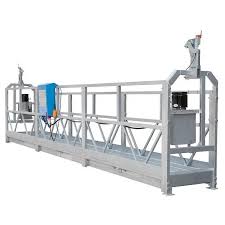Railway fish plates, also known as rail joints or splice bars, play a crucial role in connecting two sections of rail tracks. These plates are essential components of rail infrastructure, ensuring the smooth and safe operation of trains. In this article, we will explore the design and function of railway fish plates, their importance in rail infrastructure, and the various types and materials used in their construction.
The Purpose and Importance of Railway Fish Plates
Connecting Rail Sections
Railway fish plates are primarily used to connect two sections of rail tracks, allowing for the continuous movement of trains. These plates are installed at the ends of each rail section, providing a secure joint that maintains the alignment and stability of the tracks.
Distributing Load and Stress
Railway fish plates distribute the load and stress exerted by passing trains evenly across the joint, preventing excessive strain on the rails. This helps to minimize the risk of rail fractures and ensures the longevity of the rail infrastructure.
Facilitating Track Maintenance
Fish plates also facilitate track maintenance by allowing for the easy replacement of damaged or worn-out rail sections. Instead of replacing an entire rail, only the affected section can be removed and replaced, reducing both time and cost.
Design and Construction of Railway Fish Plates
Basic Design
Railway fish plates are typically made of steel and consist of two symmetrical halves that are bolted together. Each half has holes for the bolts, which secure the plates to the rail ends. The design ensures a tight and secure joint, preventing any movement or separation between the rail sections.
Bolt Hole Patterns
The bolt hole patterns on fish plates vary depending on the rail profile and the specific requirements of the rail system. Common patterns include the four-hole, six-hole, and eight-hole designs. The number and arrangement of bolt holes determine the strength and stability of the joint.
Material Selection
The choice of material for railway fish plates is crucial to ensure durability and resistance to wear and tear. Steel is the most commonly used material due to its high strength and ability to withstand heavy loads. Additionally, steel fish plates can be easily fabricated and maintained.

Types of Railway Fish Plates
Standard Fish Plates
Standard fish plates are the most commonly used type and are designed to connect rails of the same profile. They are available in various sizes and hole patterns to accommodate different rail profiles and joint requirements.
Compromise Fish Plates
Compromise fish plates are used to connect rails of different profiles, such as when transitioning from one rail type to another. These plates have different hole patterns on each side to accommodate the varying rail profiles.
Insulated Fish Plates
Insulated fish plates are used in electrified rail systems to prevent electrical current from passing through the joint. These plates have insulating materials, such as rubber or plastic, inserted between the rail and the fish plate to ensure electrical isolation.
Installation and Maintenance of Railway Fish Plates
Installation Process
The installation of railway fish plates involves several steps. First, the rail ends are prepared by grinding and cleaning to ensure a smooth and even surface. The fish plates are then aligned with the rail ends and bolted securely using appropriate torque. Finally, the joint is inspected to ensure proper alignment and tightness.
Regular Inspection and Maintenance
Regular inspection and maintenance of railway fish plates are essential to ensure their proper functioning and longevity. Inspections should include checking for any signs of wear, corrosion, or loose bolts. Any damaged or worn-out fish plates should be promptly replaced to prevent accidents and maintain the integrity of the rail infrastructure.

Conclusion
Railway fish plates are vital components of rail infrastructure, connecting rail sections and ensuring the safe and efficient operation of trains. Their design and construction play a crucial role in distributing load and stress, facilitating track maintenance, and promoting the longevity of rail tracks. Understanding the various types and materials used in fish plate construction, as well as their installation and maintenance processes, is essential for maintaining a reliable and robust rail network.
The Role of High-Quality Sleeper Screws in Preventing Rail Track Failures
www.longyutrackmaterials.com
Nantong Longyu Track MateriaIs Co., Ltd.
